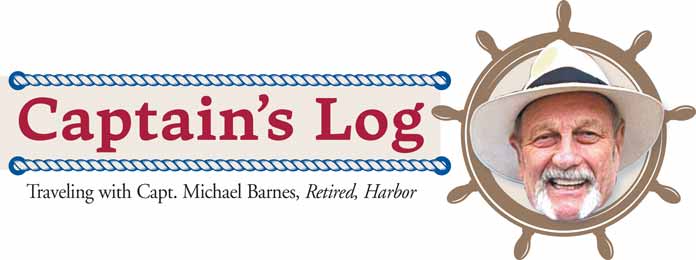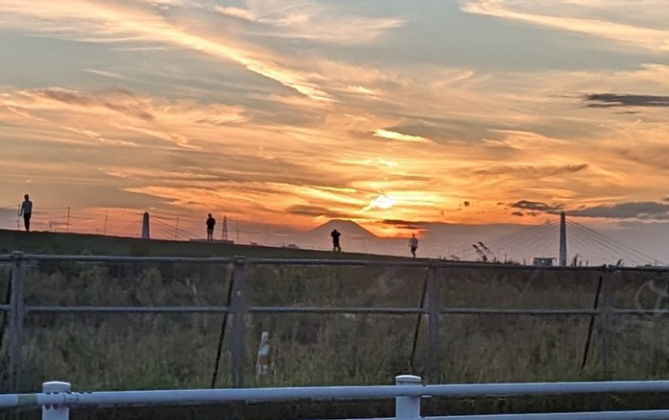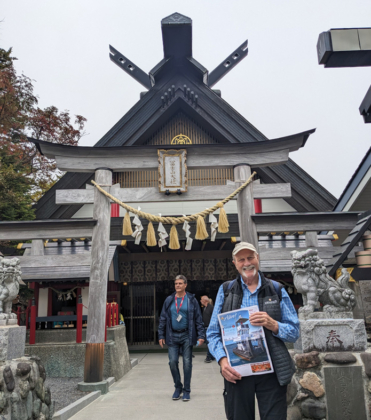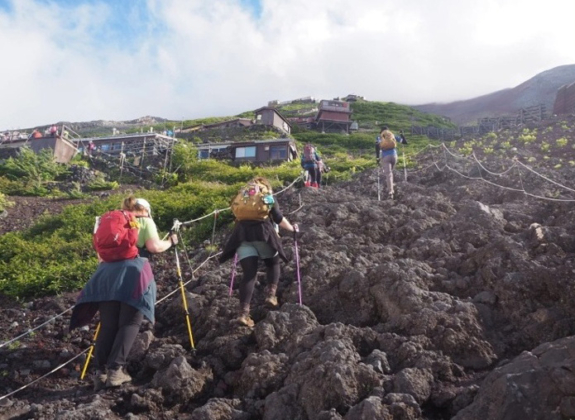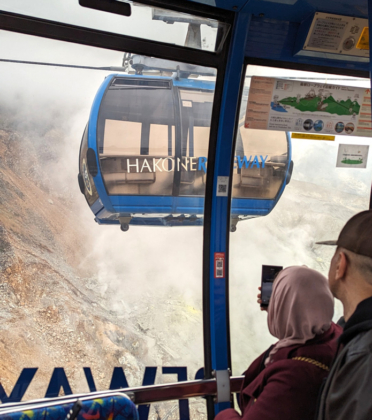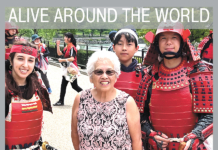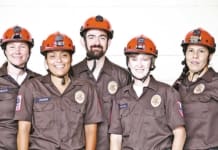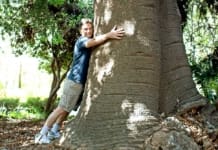 Send in your ALIVE! AROUND THE WORLD
Send in your ALIVE! AROUND THE WORLD
Take Alive! with you wherever you go! Bring your recent copy of Alive! with you when you travel and snap a high resolution photo of you holding Alive!
Send in your pictures and descriptive text using the online form, and we’ll publish it.
SUBMIT YOUR ALIVE! AROUND THE WORLD
![]()
Japan
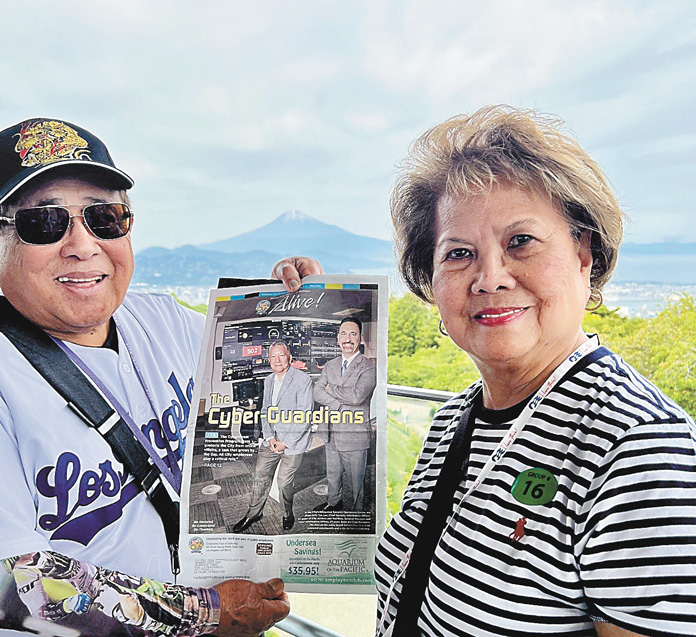
Pablo Ninofranco, Retired, Harbor, and his wife, Josie, enjoyed a cruise in Japan. “This picture was in Shimizu, Japan, with Mt. Fuji in the backdrop.”
![]()
New York City

Here’s Alive! editor John Burnes, discovering that Eighth Avenue is much easier to traverse than through the hordes in Times Square, New York City.
Letter From Japan Pt. 2
Mountains, Lakes and the Bullet Train
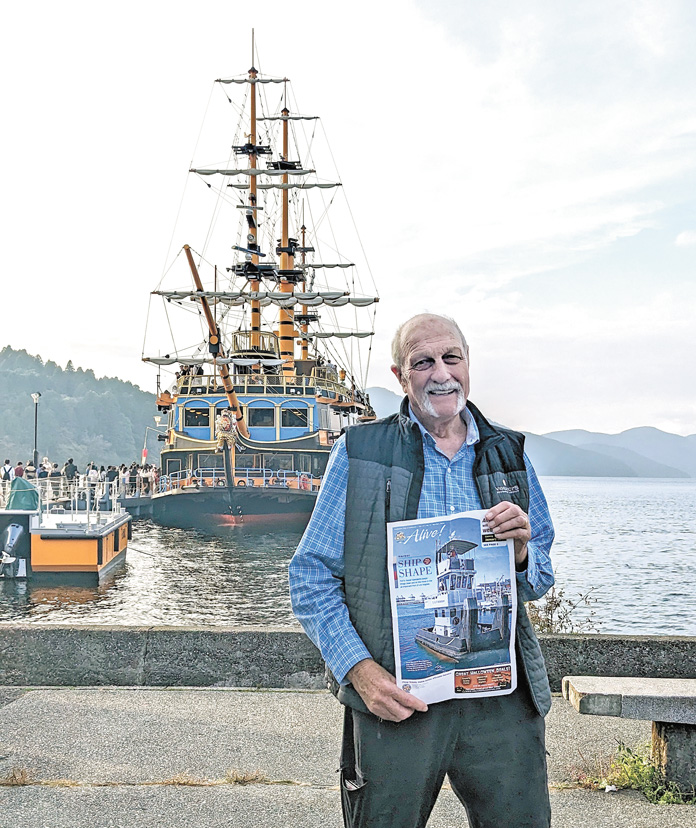
Exploring the surrounding countryside is always fun when visiting a new city, and Tokyo is no exception. With Mt Fuji-Hakone-Izu National Park only 60 miles away from Tokyo, the park is a perfect place to visit. Here are four ways to enjoy this adventure depending on time and budget.
Organized Tour Buses
Early morning coach tours for the less adventurous travelers or those with a time restriction are ideal as it’s only a two-and-a-half-hour drive up to Mt. Fuji’s fifth viewing station, the highest point accessible by vehicle. Once here, along with hundreds of fellow tourists hoping for a clear photo of Mt. Fuji (very rare), they instead photograph the shrines, torii gates, souvenir shops and the small Kiso horses (a native Japanese breed) that can take climbers and hikers to higher stations. Back on the coach, it’s back down the mountain to enjoy a buffet lunch before departure to the Hakone National Park Ropeway for a breathtaking ride in an enclosed 360-degree-view cabin over the smoking volcano below to the top of Mt. Komagatake. There you can stroll around its summit before descending for a short cruise across Lake Ashi on a pirate ship and a coach transfer to catch the evening bullet train (Shinkansen) back to Tokyo.
Car Rental
Car rental offers the most flexibility for groups or families, but an International Driving Permit (IDP) is required. Tokyo to Mt. Fuji is approximately 62 to 75 miles away, and it takes two to three hours, depending on traffic. The Chuo Expressway is the direct road to the Mt. Fuji area, and parking is no problem, including at the fifth viewing station. However, in winter, snow tires or chains may be required.
Train
Japan’s rail system is easy to use, and tickets can be bought directly from the station, as not all rail passes are recognized. A regular train (two to three hours) connects Shinjuku Station in Tokyo to Kawaguchiko Station, and from there it’s a short ride on a local bus to the Mt. Fuji fifth viewing station. The fastest train is the Shinkansen bullet train from Tokyo or Shinagawa Station to Shin-Fuji Station. If possible, sit in the right-hand window seat F (or D in Green Cars), as on a clear day Mt. Fuji is visible. Take the local Fujikyu bus from Shin-Fuji Station (two-hour-15-minute duration) to Mt. Fuji’s fifth viewing station.
Public Bus
Highway buses depart from major train stations and travel to Kawaguchiko Station or Fuji-Q Highland. Depending on traffic, it takes about three hours. If you plan on climbing Mt. Fuji, special buses from Shinjuku Station go directly to Mt. Fuji’s fifth viewing station during the July to September climbing season.
Climbers on any of the three Shizuoka trails are required to install the official free “Shizuoka Prefecture FUJI NAVI” app on their smartphone from the App Store or Google Play Store, take a preparatory e-learning lesson and a Mt. Fuji test to receive a climbing permit. If you’re in good shape, from the ffth viewing station it is almost a vertical mile climb (4824 feet) and is equivalent to climbing the 1,250-foot-tall Empire State Building in New York City nearly four times, so allow seven hours up and a little more than four hours down. Novice hikers or those who don’t want to plan it themselves should consider climbing Mt. Fuji with a travel company. The company can arrange pickup, bus tickets, guides, meals and hut reservations.
Tip: You should also bring cash coins for the pay-per-use eco-toilets on the mountain.
Eiga tanoshinde.
— The Captain


